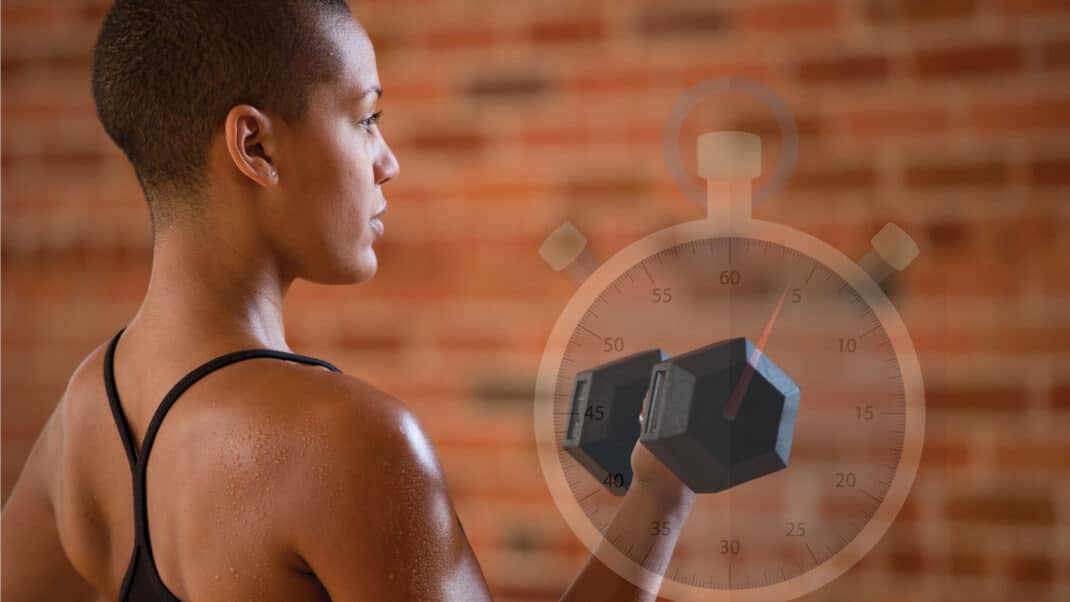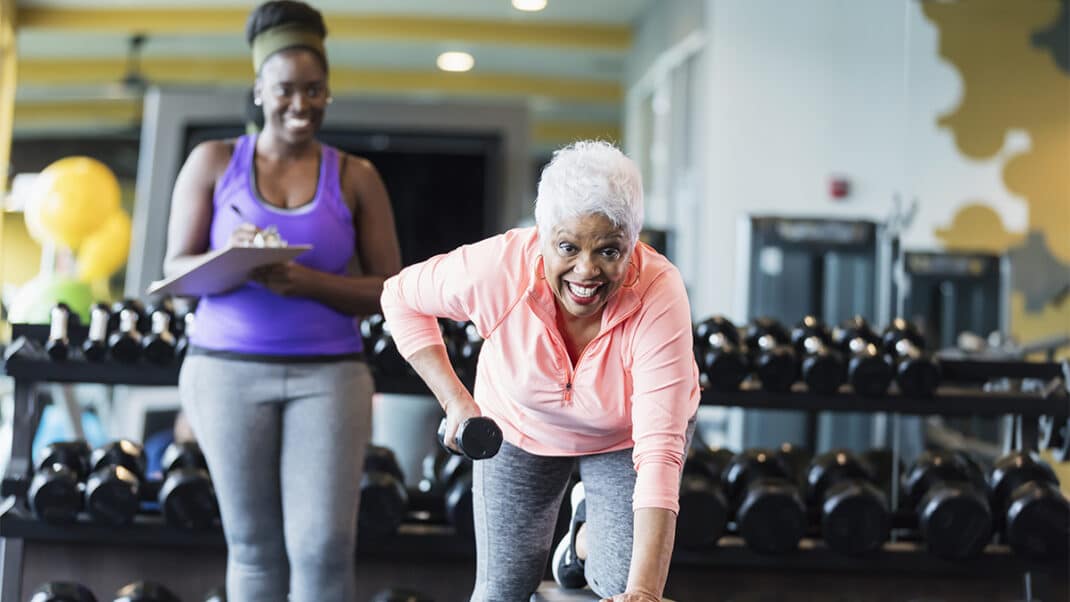Key Trends in Programs and Equipment
Six major patterns emerged from this year's survey results.
Managers and staff in the fitness industry are very resourceful. The quality and quantity of activities they produce show a flair for innovating an apparently unending blend of exercise formats and equipment. This capability is captured in the results of the 2001 IDEA Fitness Programs and Equipment Survey. IDEA members reported on their clients, programs, equipment and work environments, and painted a landscape of tried-and-true activities integrated with new options.
Are these programs working to attract and retain clients? It seems so. Survey respondents reported that 71 percent of their clients/members are customers for one year or longer.
Emerging from the survey results are six major trends:
1. Personal training and group strength training remain the most popular programs.
2. Current formats are being combined into new mixes of movement and equipment.
3. Core conditioning has emerged as a popular component of “functional” training.
4. New exercisers and older adults are comprising a larger share of facility demographics.
5. Pilates and yoga continue to grow while boxing/martial arts-based classes plateau.
6. Equipment use remains high.
Personal training and group strength training remain the most popular programs.
It is no surprise that personal training and strength training are the most offered programs in all types of facilities. Personal training gyms generated a new category of fitness facilities and training is the top health club profit center, according to IHRSA. Personal training can occur in a smaller space with less—or more—equipment, trainers are automatic “buddies” to spike retention, and the revenue stream is easy to attach to the program.
While group strength training isn’t new, industry veterans will tell you, the dynamic surrounding the workout is. The movement of balls, tubing, bars and free weights into the group exercise room, with and without music, has added incredible diversity—and good results. Small groups of three to 10 people at the fitness center learning about free weights and selectorized, computerized and pulley machines enabled many more people to use and benefit from the equipment.
Good results, knowledge of equipment use, instruction and social interaction are the keys to retention. Personal training and small-group strength training offer all of these.
Current formats are
being combined into
new mixes of movement and equipment.
For the past few years IDEA Health & Fitness Source has reported on combination or “hybrid” classes that blend two or more exercise modalities. This year that category was added to the survey.
What a great idea for making the most of current formats! Examples include yoga in water, kickboxing in water, indoor cycling and weight training, indoor cycling and treadmill walking, step and mixed-impact, step and muscle conditioning, yoga and Pilates.
Combination classes provide participants with variety, a chance to safely expand past their comfort zones, an ability to learn new skills and a way
to minimize the potential for overuse injuries. Besides, they can do more
activity in less time, and time-effective workouts are another key to retention.
Core conditioning
has emerged as a
popular component of “functional” training.
“Functional” training has been the buzz of the industry, and putting aside for a moment the argument over what that term actually means, the concept has been an excellent addition to fitness programming. An important component of functional training is termed “core conditioning.” Core conditioning focuses on strengthening and stretching the muscles of the abdominal, pelvic and lower-back regions to assist in improving the activities of daily living. Often balance training is incorporated. Frequently, body weight and stability balls are used as resistance tools. (One recently developed piece of equipment, the Reebok Core Board, was referenced in write-in comments.) Core conditioning is more comprehensive than abdominal training.
Added to the survey for the first time this year, 61 percent of facilities reported offering core conditioning. Abdominal training stayed at the top of the list, with 67 percent of facilities offering these classes. There is clearly a lot of emphasis on the body’s core.
The comprehensive nature of core conditioning supports function for a wide range of people, from frail elderly to teenagers, those with low-back pain to athletes, from the average adult to the “unaverage” person with disease or disability. This training is effective for attracting and retaining almost all types of participants.
New exercisers and older adults are comprising
a larger share of
facility demographics.
Since 1997, respondents have indicated an increase in beginning exercisers balanced by a tapering off of intermediate experience levels, with the combination representing about 80 percent of the client/member base. At the same time, clients/members over age 35 have
represented about 80 percent of the client/member base. In 2001, 27 percent of clients are estimated at 55 years or older.
Clearly, the programs and facilities being offered are appealing to the new and older exerciser. This demographic has been a particular target of the fitness industry, and these respondents appear to have found the way to attract them. A powerful statistic is that 91 percent “offer classes and programs to attract the inactive or new exerciser.”
Personal trainers pull a majority of their clients from this population, according to other IDEA surveys, and group exercise leaders have been working to make class formats appealing to the beginner as well as the advanced participant. When joined with traditional seniors’, weight management and mind-body classes, all these programs seem to be attracting the people we need to grow the industry.
Pilates and yoga
continue to grow while boxing/martial arts-
based classes plateau.
Pilates is still showing dramatic growth, while yoga has a flatter growth curve but is offered by more facilities. Both of these activities were named by respondents in a write-in question for “most growth” and “fastest emerging” during the past year. (Personal training joined them in the “most growth” area.) On the average, Pilates and yoga are offered three days a week.
As exercise formats mature, they settle into place among all the potential offerings. This appears to be occurring with classes based on boxing, kickboxing and martial arts.
Equipment
use remains high.
Equipment resides as plentifully in the group fitness room as it does in the fitness center or personal training area. And the equipment is being used. In the fitness center, most respondents own free weights, treadmills and cycles, and they are well-used by clients/members. Compared with the 2000 survey, more elliptical trainers (+12 percent), and weighted bars (+13 percent) are available in the facilities.
Most equipment requires dedicated floor space, which is at a premium in smaller facilities. This may explain why the percentage of facilities offering indoor cycling, a popular equipment-based activity, has reached a plateau. While the number of facilities offering this program is stable, the classes using the equipment are among the most frequently offered at five days a week.
Group strength training, which may use free weights, bars and tubes or larger equipment, also has leveled out—and in fact declined from 2000. But, with 72 percent of facilities offering this program, it is still the second most frequently offered.
Be a Trendsetter.
A trend is a direction that is set. Think of long-term trends at the same time you look for innovation. Does your customer want one or the other—or both?
Make a list of the equipment and programs you offer, and compare it to the survey lists.
- Is equipment being fully utilized?
- Can you rearrange equipment to create new spaces?
- Can you change the number of days an activity is offered, or adjust the time slot?
- What should you add or cut?
- Will paying for continuing education allow a personal trainer to reach a new type of client, or an instructor to launch a new class?
- Should you charge more or differently?
Use your creative ability to make changes in the schedule, and set a time to evaluate the results. Be objective, be fair, be daring. You could make a great leap toward increasing the number of participants in your program.
Patricia Ryan, MS
Patricia Ryan, MS, develops educational content for leaders and professionals in the wellness, fitness and older-adult marketplaces. Ryan has conducted market research and authored numerous white papers, survey reports, industry analyses and research reviews along with producing educational webinars. She holds a master’s of science degree in instructional technology aimed at designing professional education. She was IDEA’s first editor in chief and developed the Gold Standard of content for which IDEA is still known.









